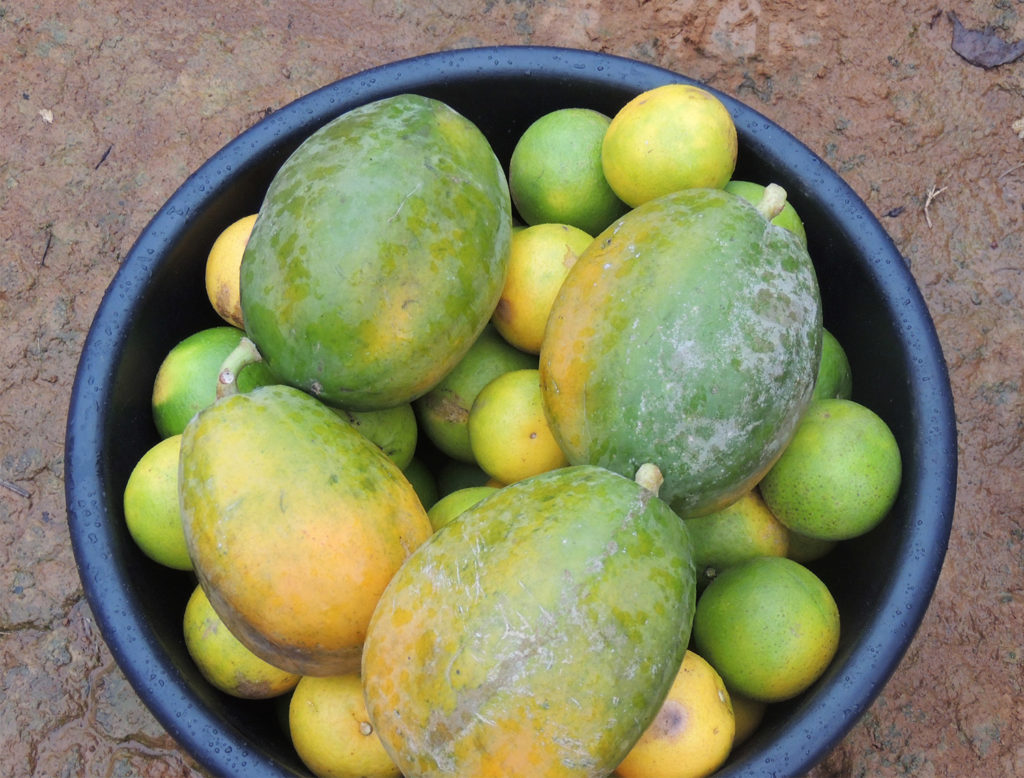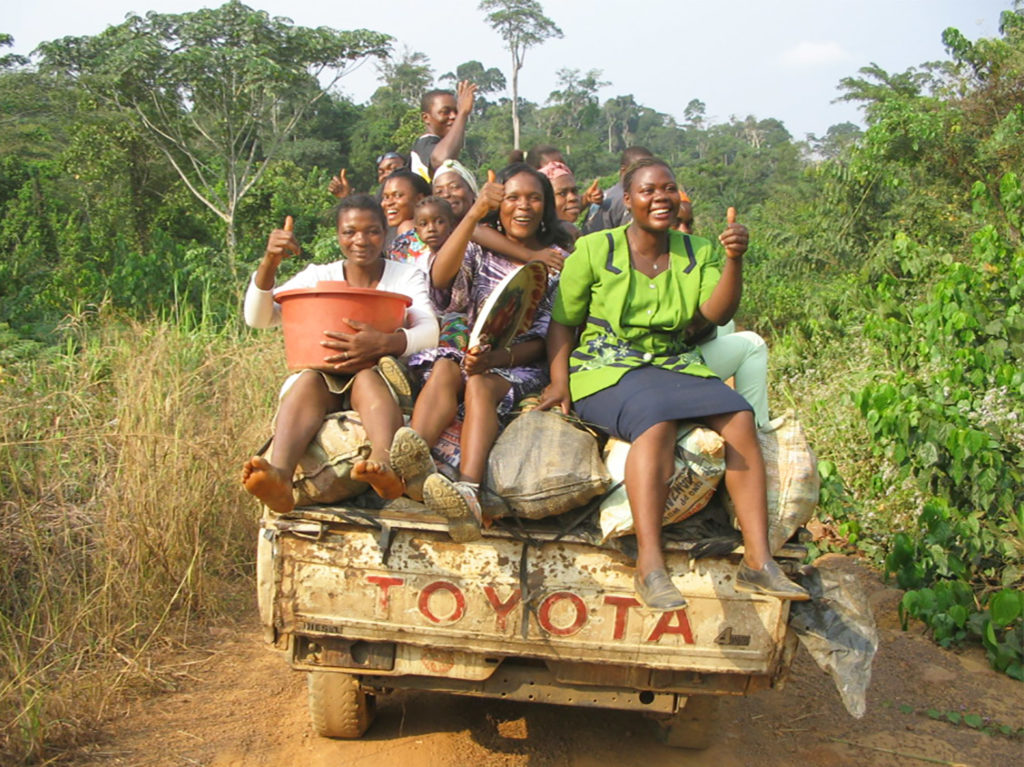Agricultural cooperatives
Nearly half of Cameroon’s population lives in the forest which provides them with essential goods and services : wood to make a fire and build houses and tools, bark, wild fruit, the sap of palm trees. However, the people mainly live on the fruit and vegetables from subsistence crops. While men do the hard work such as felling and cutting trees, agriculture relies on women’s labour. AFRIQUE FUTURE has furthered the training of 50 groups of rural women, in the form of autonomous entities, each representing a village and all gathered within SOFRAAF (Solidarité Féminine Rurale Agissante d’AFRIQUE FUTURE).

SOFRAAF is organised in a pyramid structure. The women of each village elect their president, the presidents of a sector (which includes several localities) appoint their president and finally, the sector presidents elect the general chairwoman.
Each locality or sector chooses a micro-project such as the purchase of oil-mills, cereal-mills, seeds or the conversion of forest-plots into farmland. The board of AFRIQUE FUTURE CAMEROUN examines the management of the funds previously attributed to groups and the results of their use before deciding on the adoption of the new projects.
Numerous villages are waiting for the opportunity to join SOFRAAF, but the association has to limit the number of groups to be able to assume assistance and financing. Since 2013, Cameroon’s government has encouraged the creation of rural cooperatives which it proposes to co-finance. SOFRAAF benefits from this aid. AFRIQUE FUTURE compiles the application files and assumes the administrative work.

Delivery of oil- or flour-mills
SOFRAAF is a place where women experience “living together” and prepare minds for functioning via “cooperatives”. It also allows women to prove themselves their abilities to undertake independent work, to gradually improve their own living standard and that of their children, and to possibly achieve financial autonomy. Some groups manage to save money which they “invest” with AFRIQUE FUTURE and for which they receive interest.
Farming and crops
Each family farms five plots of land. The farming methods date back to Prehistory and are still used on a third of the Planet’s surface : slash-and-burn agriculture. The men fell and cut trees, then the plot is left to dry in the sun; the women set it on fire before hoeing the soil to prepare it for the seeds. Burnt plant waste is a good fertiliser for future crops. Each plot is cultivated for a year, then left fallow for four years. The seeds of tubers are planted at the top of small mounds of earth.
Picking wild or cultured fruits
Subsistence farming is essentially turned towards self-consumption. However, it is not always sufficient to feed the population who experiences periods of food shortage whose consequences are one small meal a day, malnutrition which causes parasitic or infectious diseases, children who leave with empty stomachs for their schools hours away on foot. The main reason is the lack of means for the preservation of food that spoils rapidly in a hot and humid climate.
Transport and sale
Thanks to SOFRAAF, women can produce more with better performance. Surplus crops are intended for sale on small markets in the bush, along tracks or roads, or else on large urban markets. The lack of road communications (tracks and bridges) and transport vehicles is another major issue. The food products awaiting a rare possibility of transport deteriorate quite often.































































